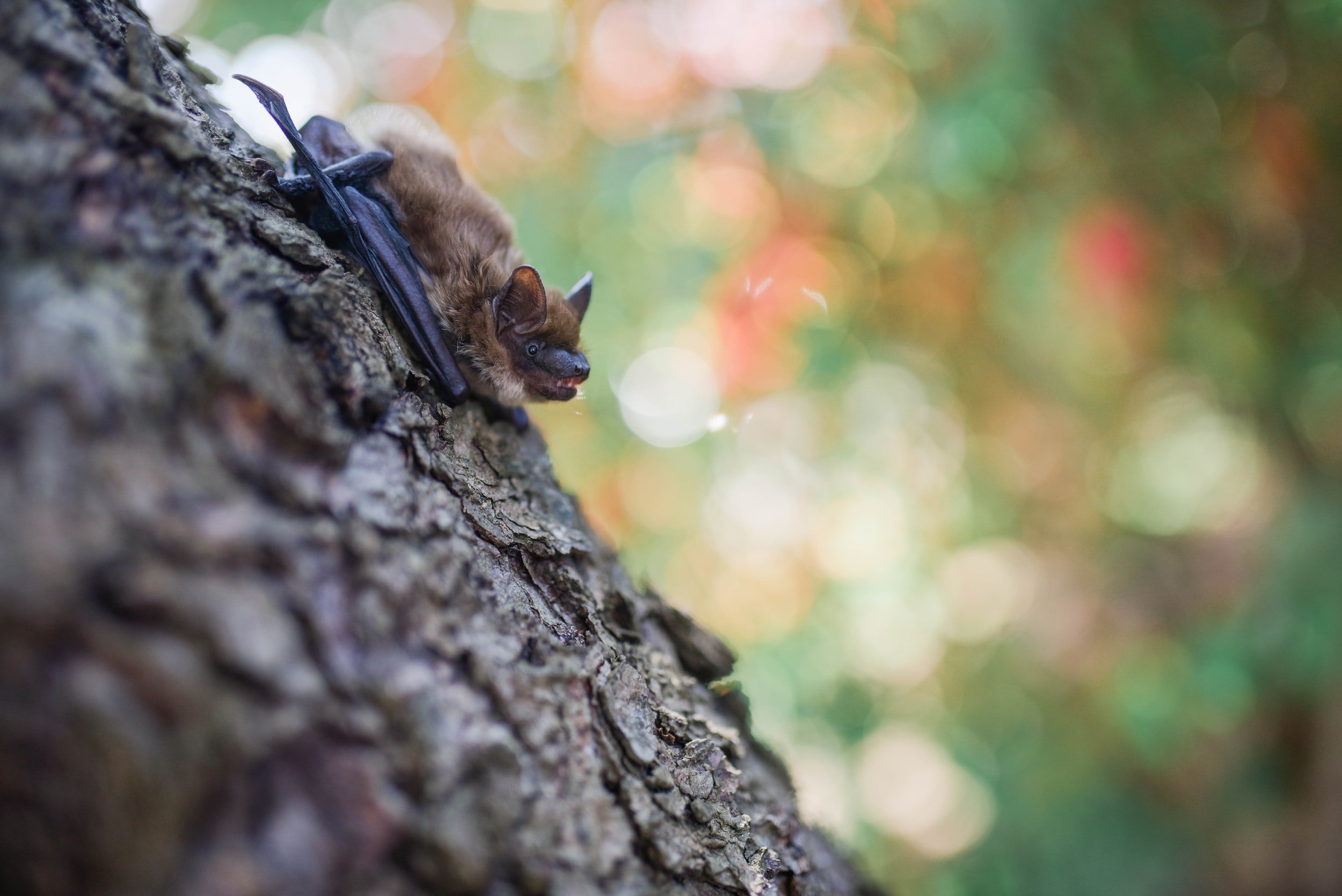
About Bats
Information about Bats (Chiroptera).
Bats & Bat Houses
-
Bats are small, flying mammals from the order Chiroptera. Of the 25 species found in California, almost all are insectivores that feed on vast numbers of night-flying insects, making them an important part of the ecological community.
Of the 25 species found in California, Several of these species—pallid bat (Antrozous pallidus), big brown bat (Eptesicus fuscus), Yuma myotis bat (Myotis yumanensis) and other Myotis species, and Mexican free-tailed bat (Tadarida brasiliensis)—frequently use man-made structures such as eaves, attics, barns, or bat boxes for roosting sites and are the species you most likely will find in urban areas. Bats are looking for shelter with warmth.
How To Attract Bats to a Bat House: Mounting bat houses on poles (like those found in our shop) increase the likelihood that bats will be attracted to your area. Avoid mounting bat houses on trees, but do mount your house near bodies of water as bats like to roost near sources of water.
-
If you choose to put up a bat house, make sure it is in an area that has minimal disturbance from people and animals. Sometimes sick bats fall out of the roost where children and household pets easily can pick them up.
Bat houses attached to the sides of buildings tend to have good success, but, not only is the usual intent of erecting a bat house to get bats away from buildings, but bat droppings will accumulate below creating nuisance or hazard.
Bat houses on poles in open areas are functionally proven. In fact, many reports demonstrate that two houses, back to back, mounted on an 12’-14’ pole are optimal, likely due, in part, to the need for early morning warmth and late afternoon cool. Bats rarely occupy houses placed in trees. Installing bat houses before March improves the chance of occupancy. It is not unusual for bat houses to remain unoccupied for a year or more. Bats prefer houses that are within 1/4 mile of water with enough room to drink on the wing (drinking while flying).
-
Among the eight largest samples reported by individual people who had erected multiple bat houses, use rates varied from 0 to 96%. For example, at one Oregon location, none of 18 houses placed on trees in dense forest were occupied, while 23 of 24 at another Oregon site attracted bats when placed both outside and inside a barn and on poles at the edge of woodlots. The only one not used was mounted on a shaded tree trunk.
-
It has long been believed that bat houses were most likely to be occupied after at least one or two seasons had passed, but this study found exactly the opposite. Most houses used by bats were occupied in the first season. Eighty-five percent were first used within two seasons and only 15% in the third through sixth seasons.
Bats are small, flying mammals from the order Chiroptera.
Of the 25 species found in California, almost all are insectivores that feed on vast numbers of night-flying insects, making them an important part of the ecological community.
Our Vision
To offer the highest possible value by building a highly functional no-frills product while keeping overhead low.
The Problem
Every year tons of grapes are lost to rodents. One study indicated that “rodent damage remains significant despite the use of pest control methods. Many valuable crops were damaged heavily and the economic impact was likely large.” (Karen Gebhardt et al. Department of Economics, Colorado State University, Fort Collins, CO 80523, USA)
The results of another study indicate that damages from rodents remain high for many crops and are likely to be economically significant within the state of California. Rodents: Vols, gophers, Rats not only damage plants at the root, shoot, and leaf-level but also attract other annoying pests like snakes while siphoning off irrigation water for their own consumption and into tunnels.
The Solution
Rodent Control - Nature’s Way. Due to increasing rodent populations and a need to reduce chemical use in the field, the use of barn owls in agriculture is rapidly increasing.
The Barn Owl is one of the most efficient hunters on wings. A family of barn owls will consume up to 3,000 rodents in one year (a single adult owl will consume up to 1,000 pocket gophers in a year). The owls can be more effective than poison for rodent control.
According to the California Fish and Wildlife Service: “For the pocket gopher, barn owls represent a substantial biological control. Research work in California showed pocket gophers represented over 50% of the barn owl diet representing an average of 215 gophers ‘taken’ during the breeding and nestling phase.”
Think about it. The farmer spends approximately $200 and nature takes care of the rest.

